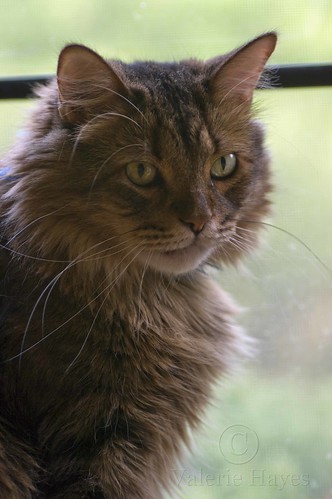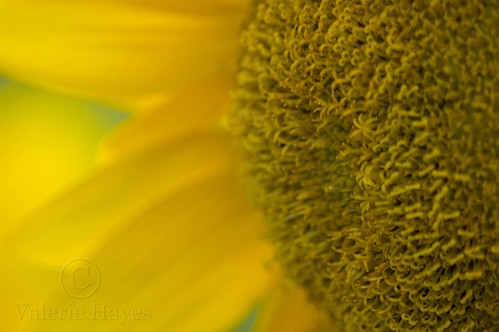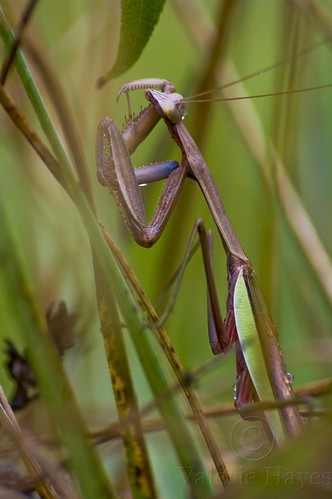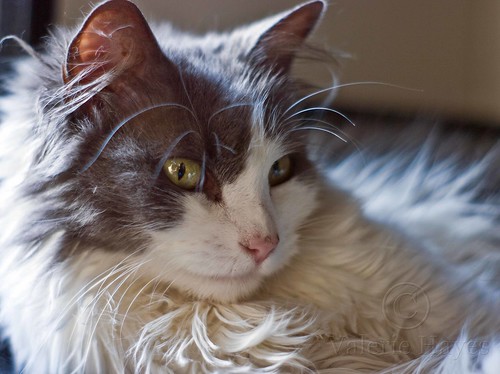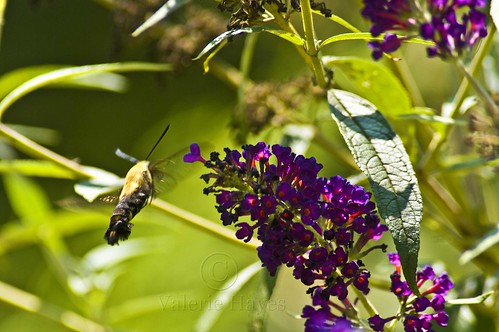
Tuesday, August 25, 2009
Chomper Meditating

Monday, August 24, 2009
Xavier
The Tamron 90mm macro arrived today and I was testing its other use--portraiture. Nice, sharp lens. Very smooth. I haven't seen evidence of the chromatic aberration that plagues my other lenses. The colors are very good and the length is good. I can get very close to flowers. I will try some butterfly and box turtle photography with it soon.
Sunday, August 23, 2009
Beautyberry
The beautyberries are coloring up, starting with those low on the branches. I wasn't expecting to tsee this just yet. They are food for migrating birds, so fall migration is not far away. I haven't seen another fruit quite this color. This is another experiment withthe old 5omm manual lens. The pictures have a different feel than do my newer zooms, which is probably due to this lens opening up to f/2, but maybe something else is going on as well...
Saturday, August 22, 2009
Sunflower Close-Up
An extreme close-up with limited color palette and depth-of field. A very few characteristics o this flower are emphasized--the yellowness and the tiny florets in the center of the disc...
Lady Mantis Bathing
Actually, this picture should be entitled "Dude Looks Like a Lady Mantis Bathing" because the mantis is a male, based on his slim build and long antennae, I am told. He lived in a butterfly bush in the backyard for a couple of weeks and I photographed him many times. He didn't seem to go after butterflies, though, preferring to hang out low on the bush most of the time. I frightened him away one day by trying to move him higher up near one of the flowers for a picture. He flew off to a nearby holly bush and then a maple tree where I lost track of him. He was very tolerant of photography as long as I didn't try to pick him up. When I did, he decided that I was a predator and that location was no longer safe. I haven't seen him since. His flight was quite spectacular. The Asian painters really got it right back in the day. I howerver diodn't manage to get ny pictures of him flying.
Thursday, August 20, 2009
Passion Vine on Fence
Here's a photo of passion vine (Passiflora incarnata) growing on a fence wire at Fairywood Thicket Farms. This Georgia wildflower seems fantastically, gratuitously complex, but then what in nature isn't? For some reason, this flower just makes you notice unexpected beauty and complexity. Missionaries were taken with it and attached religious symbolism to the various floral parts, using the flower as a teaching tool to spread Christianity. To caterpillars of fritillary butterflies, it is their host plant, and they make an interesting juxtapsoition with their food, all black and red and spiky and hungry, then they pupate into gratuitously beautiful chrysales and emerge as black and orange butterflies studded with pearly spots. They flit through the sunlight and nectar on zinnias and verbena and most any other flower. The fruits of this plant are hollow and rather tangy. I suppose the hollowness is how they got the name 'maypops', though May would be very early for them around here.
Wednesday, August 19, 2009
Ernest
I dusted off my old 50mm 'normal' lens, circa 1983. Pentax says that the new digital SLRs are back-compatible with their old manual lenses from the film era and even with the screw-mount ones, provided an adapter is used. Of course, just mounting an old lens on a new camera won't make it autofocus or communicate things like f-stop to the camera's computer, but with a couple of adjsutments outlined in the Pentax manual and the Magic Lantern guide, the lens worked just fine, though compared to my zoom lenses, it is tiny. Focusing is completely manual and only the center focus point is available with this lens. Focusing is slower than it is when using the manual setting with the newer lenses for some reason. Since there is no split screen, I have to rely on the focus alert and it sometimes allows the focus to over-and under-shoot the mark a couple of times before accepting it. Still, this lens lends itself to candid and hand-held shooting a lot more than do the larger zooms, including the one that covers 50mm. Having f2 available is great for available light photography, and Pentax's shake reduction is in the camera where it belongs, so it applies even to this lens, enabling sharp hand-held photography at 1/30 second.
This is Ernest, who I raised from the time she was 11 days old. Yes, she. I can't sex kittens to save myself, and by the time I figured it out, I'd already named her. It doesn't even seem strange to me.
Tuesday, August 18, 2009
Hawkmoth on Butterfly Bush
I'm not sure why I like this picture. Maybe its the lighting. The hawkmoth is blurred by motion, but it is very difficult to freeze their motion even in bright light. This animal, whose scientific name I still have to look up, is nectaring at a butterfly bush. The y can be mistaken for hummingbirds for their appearance and behavior. The larvae are called hornworms. It amazes me that a caterpillar can turn into something like this.
Monday, August 17, 2009
Hibiscus With Green Lynx Spider
I took this photo yesterday, immediately after a rain shower. The spider is a green lynx spider Peucetia viridans (Hentz). Now that I am becoming a more proficient and prolific photographer, I will try to post the "Photo of the Day" to this blog, which I have been neglecting in favor of Flickr. Here I will post more extensive information on the natural history of my photographic subjects, and the story behind each picture. This particular picture is an example of how macro photography enables you to notice things you would ordinarily overlook. I have a particular affinity for things ordinarily overlooked, and in general, I think I'm a pretty good observer, but I didn't even see this spider when I first took the picture. I was photographing the hibiscus and only noticed the spider whan I reviewed the images a few minutes later on the LCD screen. I would have liked to photograph the spider against the red petals, but then he probably positioned himself on the green sepal deliberately, so I didn't try to interfere. These spiders are known for preying on insects regarded as both harmful and desirable. They even make a habit of eating wasps and other stinging insects.
